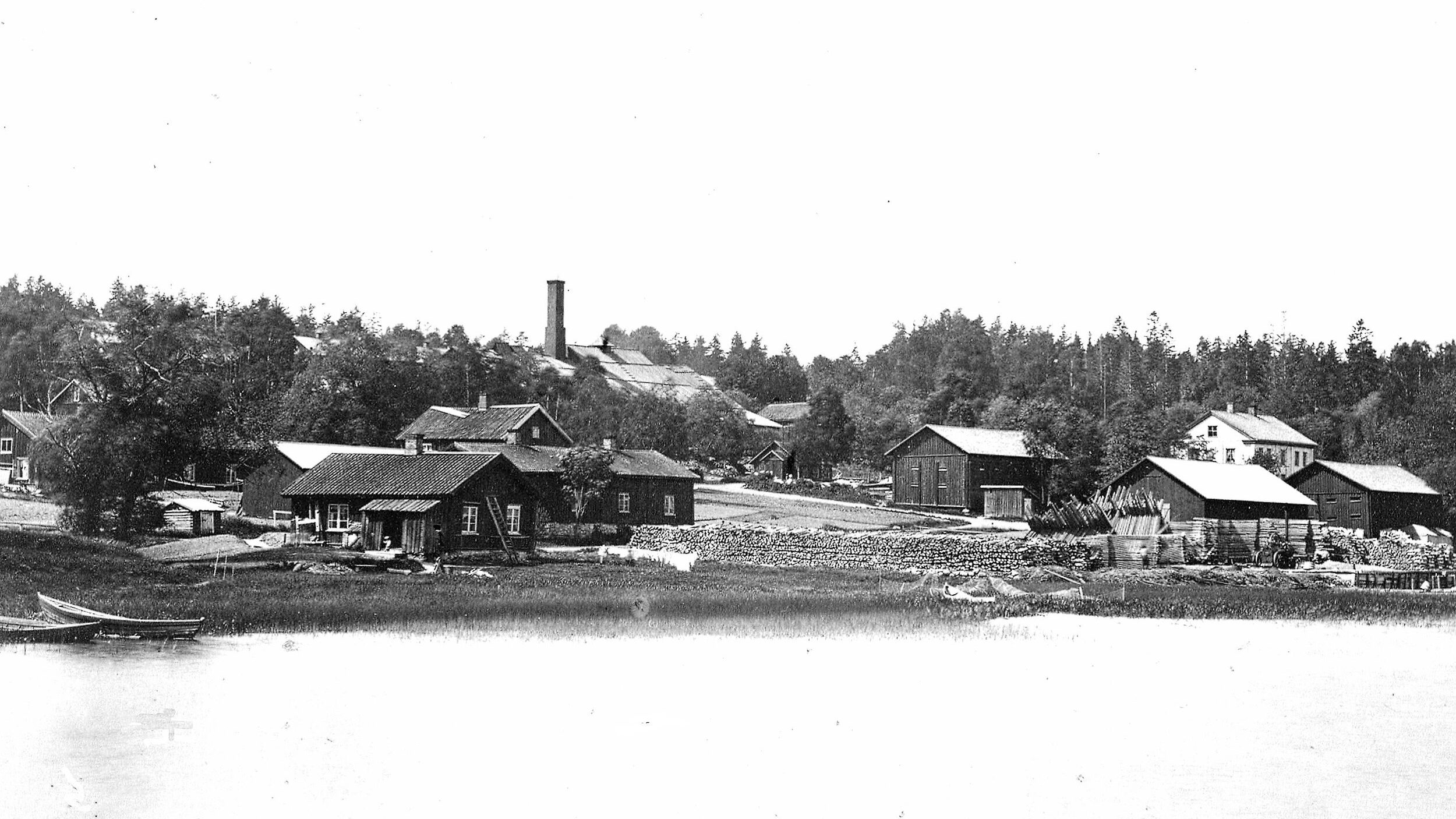
Grums is a place that has a large history that has shaped the municipality in to who it is today. From the middle ages where Grums was a port into the county to the industrial empire that shaped the people.
Prehistoric times and ice ages
The cobblestone field “Stentorget”
Embark on a journey 10,000 years back in time to Näshöjderna, once small islands in a sea that covered all of southern Värmland. Here, the cobblestone field “Stentorget” was formed, an ancient shoreline 175 meters above today’s water level. The smooth stones tell the story of the powerful forces of the Ice Age and the movement of waves thousands of years ago.
Stentorget cobblestone field, Värmskog
The Iron Age and Viking age (500 BC – 1050 AD)
The envelope grave
In the heart of Sveaparken in central Grums, you’ll find the fascinating envelope grave, a well-preserved burial site and stone structure from the Iron Age (500 BC–1000 AD). The grave is named for its unique appearance – a rectangular stone construction resembling an envelope, with diagonal stone rows, larger stones at the corners, and a flat slab in the center.
Lökene grave fields
Just north of Grums lies Lökene, where two impressive prehistoric burial grounds with 50 mounds stand as a testament to a bygone era. Although these graves have not been excavated, finds from a nearby burial site – including pottery shards, iron fragments, and a bronze ring – have been dated to the Viking Age (800–1500 AD).
Lökene grave fields, Grums
The envelope grave, Grums
The middle ages (1050–1500)
Edsholm castle
At Slottsbrosundet in Grums, the ruins of Edsholm Castle stand tall, a powerful medieval fortress built in the 1370s by Marshal Erik Kettilsson Puke. Strategically located to control important waterways and trade routes, the castle became a central point in the region. Captured and destroyed during the Engelbrekt Rebellion of 1434, it was never rebuilt, but the ruins testify to its grand history.
Edsholm castle ruins, Grums
The industrial years (1600 – 1950)
Borgvik Iron works
From 1627 to 1924, iron was produced at Borgvik Ironworks, with a peak production of 4,000 tons per year, some of which was delivered to the Eiffel Tower in Paris. The remaining buildings in Borgvik are of significant cultural-historical value, many constructed with unplastered slagstone, known as sinterstone. In total, around fifty structures are preserved, including the blast furnace ruin with arches, the bakery, the mill, and the southern manor house.
Borgviks Excecution site
At Borgvik’s execution site, the village’s wrongdoers met their fate from the 1700s to the mid-1800s. One of the most memorable stories is that of Britta Jonsdotter, who was beheaded and burned at the stake in 1760 for having a child out of wedlock. A memorial stone, inaugurated in 1979, serves as a reminder of this tragic chapter in the area’s history.
Liljedal’s glass factory
Between 1781 and 1917, Liljedal’s glassworks was Scandinavia’s largest, with 150 glassblowers producing over 13 million bottles annually. Among other items, they created a medicine bottle that became the model for a world-famous Swedish vodka bottle. Today, the foundation walls, a memorial stone, and a glassworks museum at Liljedal’s folk museum stand as reminders of the factory’s greatness.
Skans 113
Skans 113 in Borgvik was part of the inner defense line during World War II and served as a final barrier if the enemy had passed the larger forts. Built according to the 1000-standard, it was simpler than the outer forts and often lacked protective fortifications. Notable features include the concrete mill warehouse and a unique KG-hat, which has not been found at other locations, and parts of the fort have been restored by the local heritage association.
Borgvik ironworks, Borgvik
Borgvik’s excecution site, Borgvik
Skans 113, Borgvik
Liljedal’s glass factory, Liljedal
Let Grums be the starting point for your own journey back in time – a place where the echo of the past meets the beauty of today och the possibilities of the future.
Do you want to learn more?
Grums is home to several local heritage associations that are the heart of our history and culture, where dedicated volunteers work to preserve and bring our shared heritage to life. Visit a local folk museum and experience local stories that connect us to our history.
Borgvik’s heritage association
Liljedal’s heritage association
Slottsbron’s heritage association
Grums’ heritage association
Segmon’s heritage association
Värmskog’s heritage association
